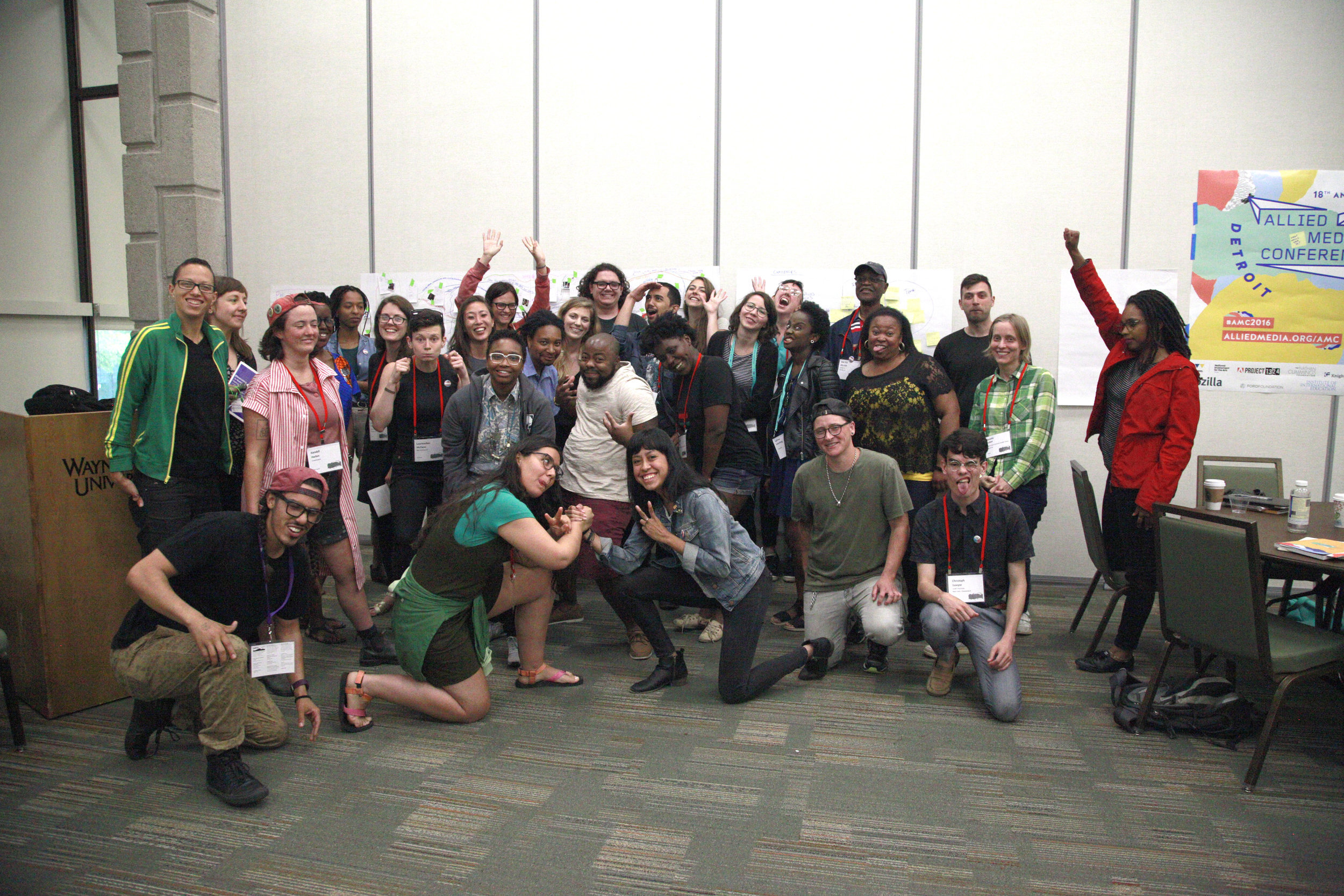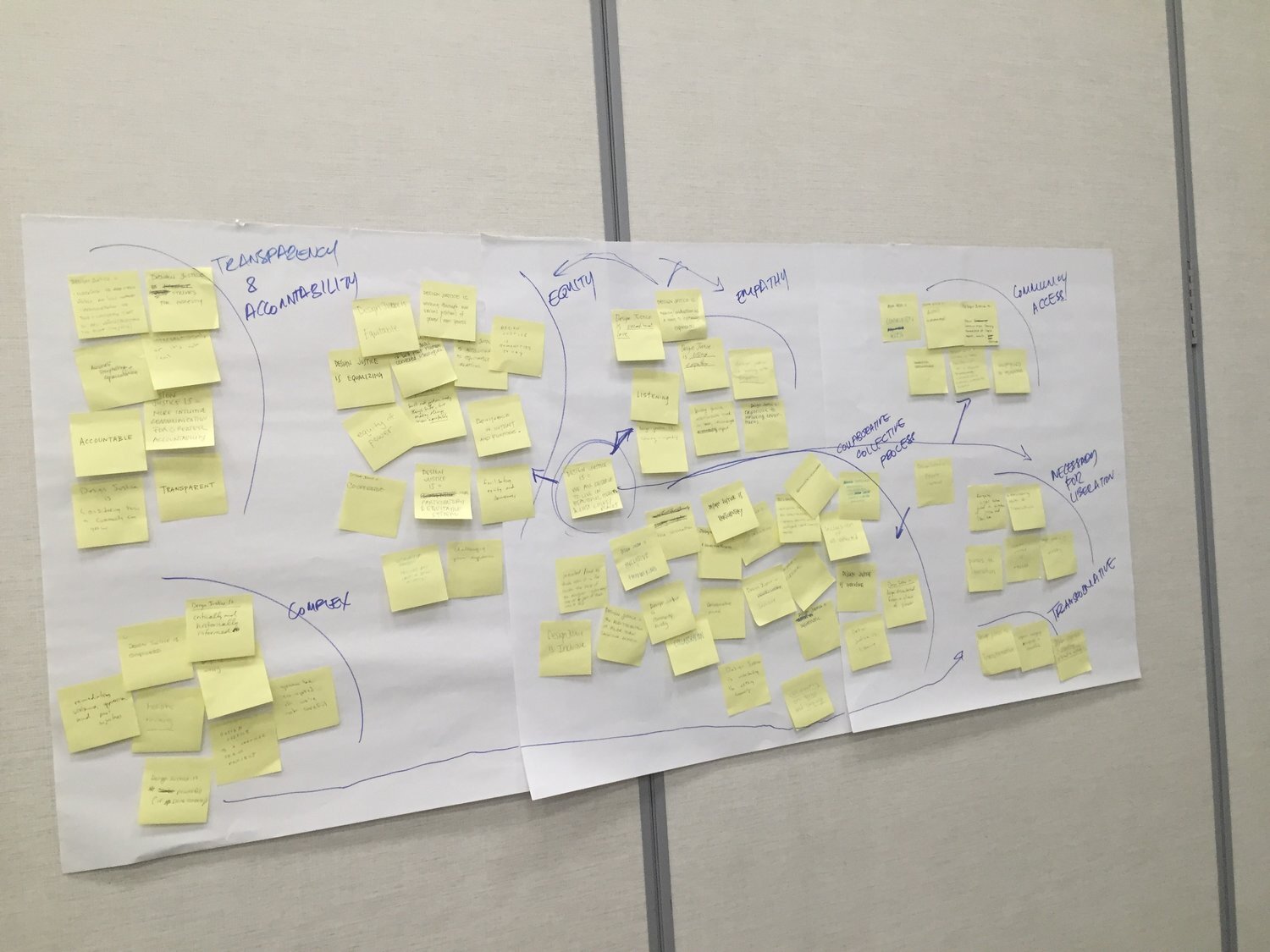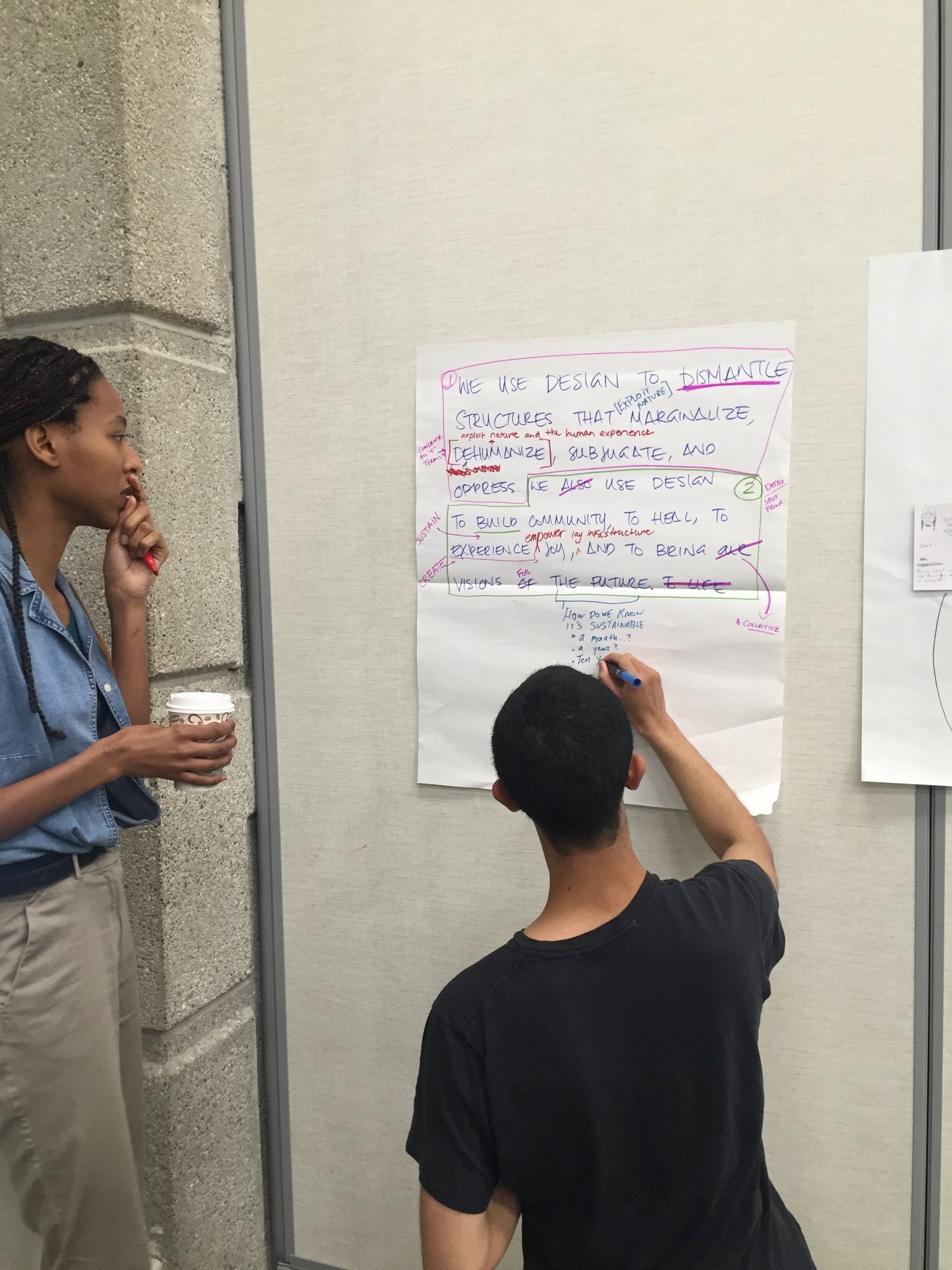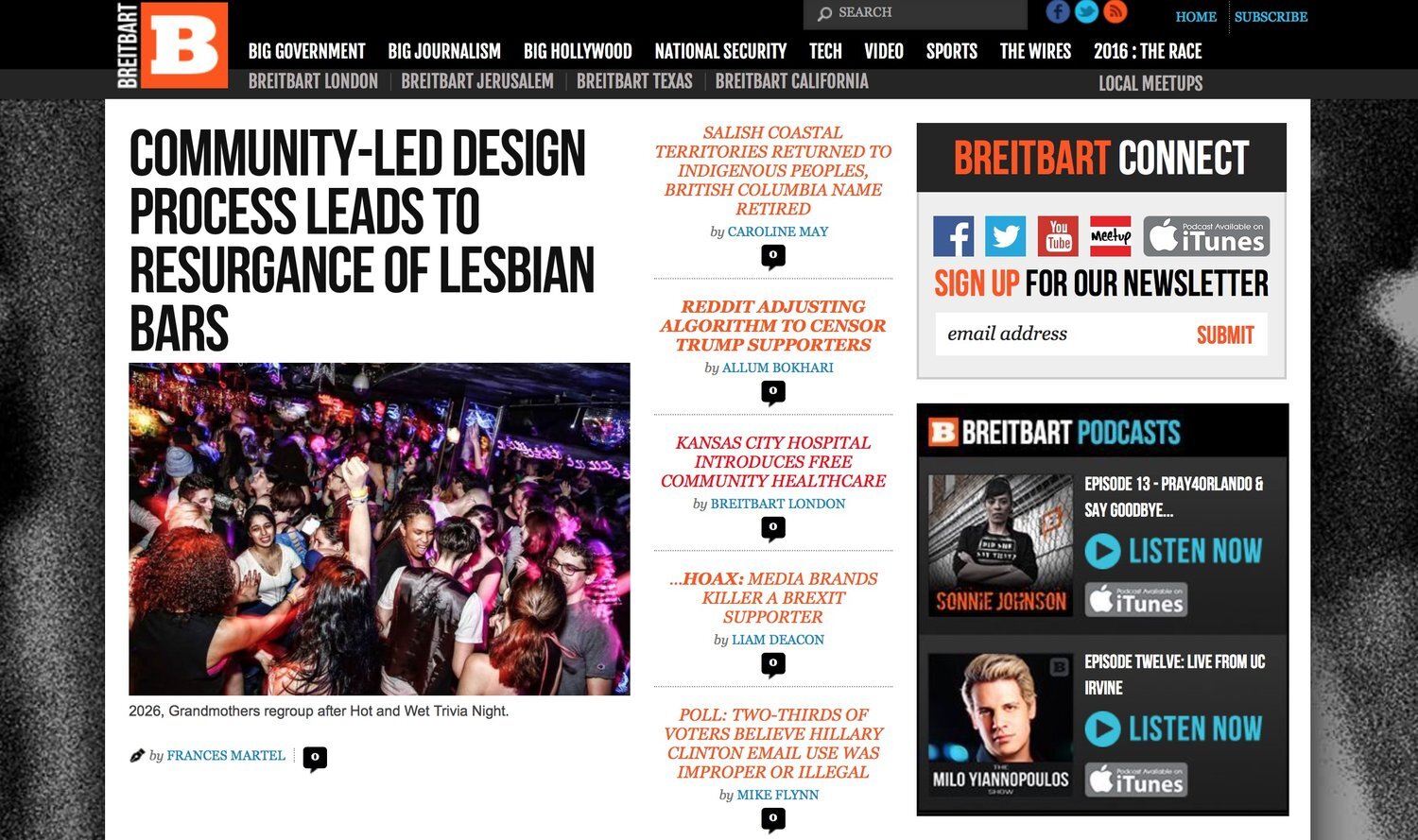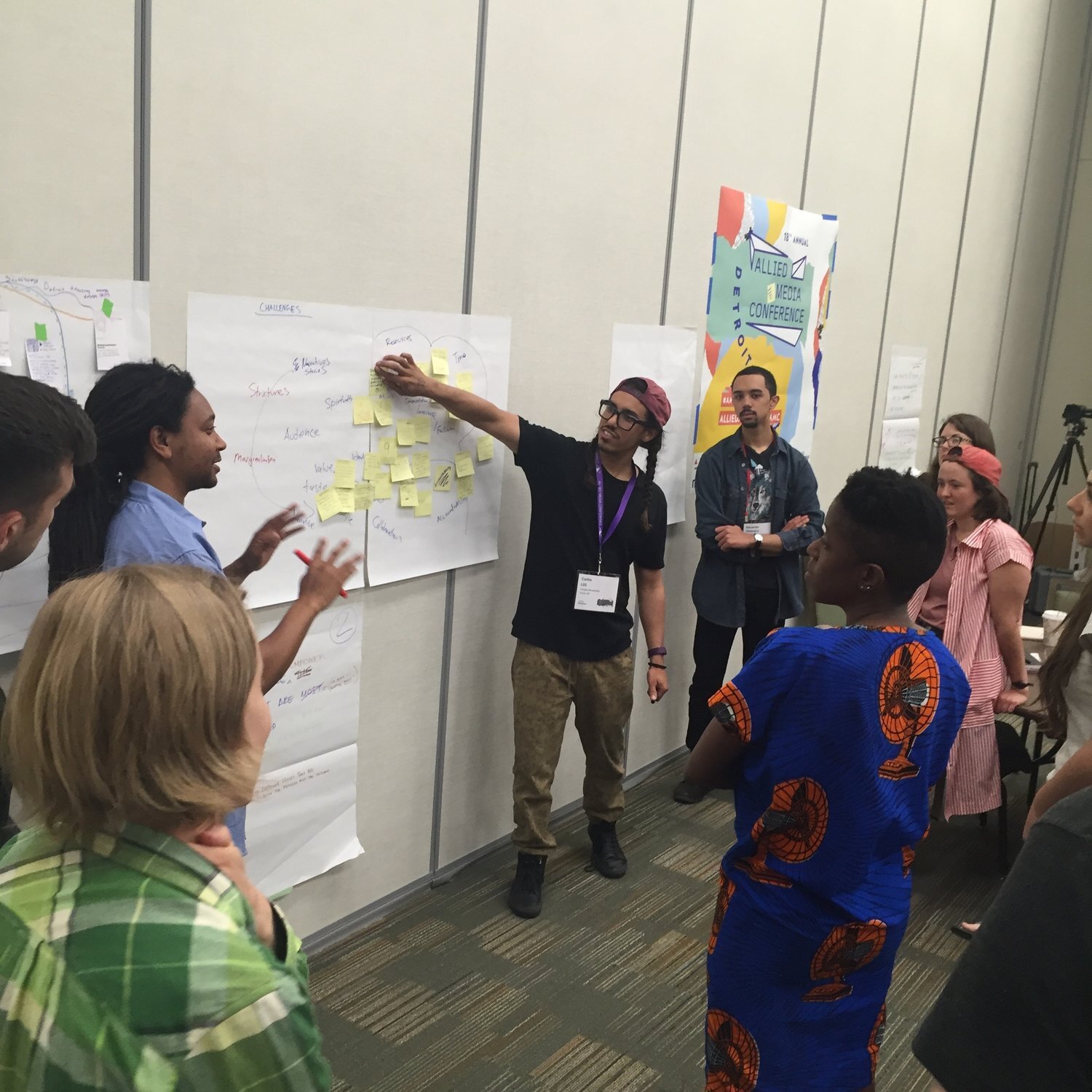2016 Network Gathering
The 2016 Design Justice Network Gathering took place on June 17, at the Allied Media Conference in Detroit. It brought together 30 design practitioners and community organizers who work in social justice and who wanted to connect around and collectively define the concept of Design Justice.
The Network grew out of a session at the 2015 Allied Media Conference on Generating Shared Principles for Design Justice. Read more about that session here.
Building the human network
Our Human Network
We began by building a human network. First we filled out a profile card complete with our name, avatar, gender pronoun(s) as well as a statement on how we use design for social justice in our communities.
The Network Gathering participants were from cities and towns across the US and Canada, and many of us had not yet met each other or been in the same room. As we walked around and exchanged information, we learned about things we shared in common. We mapped out those connections in a giant network diagram.
Credit for this activity goes to Feathers of Hope, a First Nations youth advocacy initiative based in Ontario, Canada.
Our human network
Defining Design Justice
Rather than handing down a definition of Design Justice, the coordinators invited the network members to participate in defining it.
To provide context, Una Lee, one of the Network Gathering coordinators, reviewed the activities and outcomes from the 2015 workshop. In smaller groups. we then shared our own stories about design projects we'd worked on or knew about that had a social justice goal. Like the workshop in 2015, we were asked to identify:
Who was most affected by the issue?
Who had the most power in the process?
We shared our insights from these conversations back to the larger group.
Design Justice is...
Primed with tangible examples, we then took 3 sticky notes and completed the phrase: "Design Justice Is..."
We categorized those ideas through an affinity mapping exercise. For this group, Design Justice is:
Transparent and accountable
Equitable
Empathetic and compassionate
Collaborative and collective
Accessible to communities
Necessary for liberation
Transformative
Accountable
Collaborative editing
Collaborative Editing
Just as no one individual should define Design Justice, it was also critical for the network principles to be created and edited by the community that would promote and apply them. The next activity involved breaking out into smaller groups to edit the draft principles generated in 2015.
Each group spent 10 minutes on one principle, editing it in light of our earlier conversations. The groups then rotated twice, meaning that each principle had been edited three times.
Collaboratively editing the network principles
We wrapped up this session by (attempting to) read out the newly edited principles.
One of our Newsjacks
Newsjacking and Designing the Future
To switch things up, Sasha Costanza-Chock from Research Action Design led a fun "newsjacking" workshop. Newsjack.in is a media remixing tool built by Sasha and Dan Schultz.
Sasha invited us to think up headlines from our imagined future of Design Justice, and to use Newsjack to splash them on mainstream and right wing media sites. Our headlines included:
Community-led design process leads to resurgence of lesbian bars
UN abolishes gender binaries — Babies R Us files for bankruptcy
Last prison closed, transformative justice is the new standard everywhere
Design Justice School solves all problems, closes doors
You can read the outline and notes from this session here.
Identifying challenges in applying the principles
Challenges presented by a Design Justice approach
Of course, it was important to recognize that it is not necessarily easy to move from design with good intentions (aka social impact design, charitable design, design for social good, etc.) to design that promotes justice and is just in its processes and outcomes. There is a great deal of investment in work that does not challenge the status quo.
In the last session of the day, Carlos Garcia and Wes Taylor (also network gathering coordinators) led us in identifying challenges we have faced or would face in working according to our principles. We also began to discuss strategies for overcoming these challenges. Some of these were:
Concerns that these processes requires more resources than traditional design (more time, more money, more supplies, etc.)
Collaboration is hard
Questions of taste
How do we remain accountable to communities?
How do we resist the co-optation of Design Justice by people and powers who are not interested in principled work?
We did not have any easy solutions. But it was valuable to map out all the hurdles, and to know that we now had each other to face them with.
Mapping the challenges
Takeaways
We ended by discussing what we'd take away from the day.
It was clear that the slow work of building principles together was very valuable, and making space for considering them in depth would change our work moving forward.
Engaging collaboratively with these ideas means we feel more compelled to grow Design Justice as well as to protect it from co-optation.
Having community organizers who utilize design as well as designers who work in social justice was a unique experience for the majority of us. There was a clear need for more spaces like this, and people were excited to create future opportunities to build on these conversations.
Standing in a circle, we thanked each other for the day, and one by one said 3 words that summed up our experience. Some of these were:
Inspired
Full
Grateful
Challenged
Tired
Motivated
We're so excited for the future of the Design Justice Network!
The Design Justice Network Gathering was coordinated by Nontsikelelo Mutiti, Una Lee, Wes Taylor, and Carlos Garcia (with some support from Victoria Barnett).

